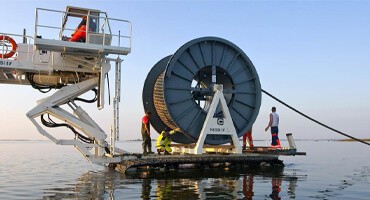Slip rings are key components in an array of devices, especially in cable reels. Selecting the right slip ring is an important part of any cable reel application. Understanding the dynamics at play, particularly with the variety of slip ring types available, as well as mitigating common challenges, could make the difference between smooth operations and costly downtime. This definitive guide is designed to take you through the ins and outs of slip ring selection for cable reel equipment, with a detailed exploration of selection factors, benefits, and answers to frequently asked questions.
Importance of Slip Ring Selection for Cable Reel
Choosing the correct slip ring has a direct bearing on the performance, durability, and longevity of cable reel equipment. An appropriate slip ring not only supports seamless operation but also reduces the need for frequent maintenance, thereby saving valuable time and resources.
Choosing the right slip ring for a cable reel is critical for ensuring optimal performance, reliability, and longevity of the equipment. Here are some key points highlighting the importance of slip ring selection for cable reels:
Ensures Reliable Signal and Power Transmission
Selecting the appropriate slip ring ensures that electrical signals and power are transmitted reliably between stationary and rotating parts of the cable reel. This is crucial for maintaining the integrity of data and power transfer without interruptions.
Enhances Durability and Lifespan
A high-quality slip ring designed for the specific operating conditions of the cable reel can significantly enhance the durability and lifespan of the equipment. This reduces the frequency of maintenance and replacement, leading to lower operational costs.
Minimizes Electrical Noise and Interference
Proper slip ring selection minimizes electrical noise and interference, which is essential for applications requiring precise data transmission. This is particularly important in military and industrial applications where accuracy is critical.
Supports High-Speed Operation
Slip rings designed for high-speed operation ensure smooth and efficient performance of the cable reel. This is important in applications where rapid deployment and retraction of cables are required.
Accommodates Specific Environmental Conditions
Choosing a slip ring that is suited to the environmental conditions in which the cable reel will operate (such as extreme temperatures, humidity, or exposure to corrosive substances) ensures reliable performance and longevity.
Customizable to Application Needs
Selecting the right slip ring allows for customization to meet the specific needs of the application, including the number of circuits, voltage and current requirements, and the type of signals (e.g., Ethernet, HDMI, power).
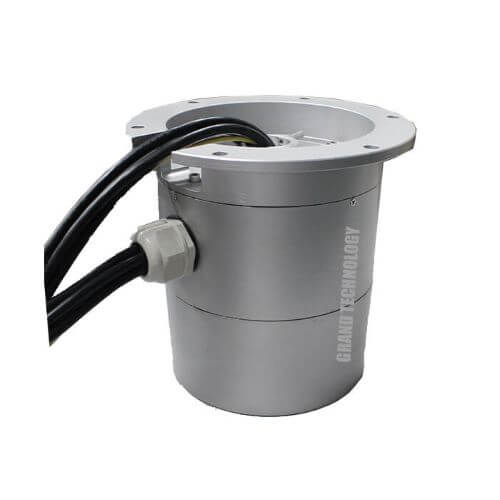
Reduces Downtime and Maintenance
A well-chosen slip ring reduces the likelihood of failures and the need for frequent maintenance, leading to increased operational efficiency and reduced downtime.
Supports Heavy-Duty Applications
For heavy-duty applications, such as in military and industrial settings, selecting a robust and high-performance slip ring is crucial to handle the demands of high loads and harsh operating conditions.
Ensures Safety and Compliance
Using the appropriate slip ring ensures compliance with safety standards and regulations, which is essential in environments where safety is a top priority, such as in military applications.
Optimizes System Performance
Overall, the right slip ring optimizes the performance of the cable reel system, ensuring that it operates efficiently, reliably, and meets the specific demands of the application.
By understanding the importance of slip ring selection and choosing the right component for your cable reel, you can ensure optimal performance, reliability, and cost-effectiveness in your operations.
Types of Slip Rings Applied to Cable Reel
Slip rings facilitate the transmission of power and signals between stationary and rotating components in cable reel equipment. There are three main types of slip rings used in these applications, each with unique features and suitable for different requirements. Let’s delve deeper into each of these categories:
Electro-Mechanical Slip Rings
Electro-mechanical slip rings are the most common type applied to cable reels. They comprise metal brushes and rotating metal rings that create a steady electrical connection during rotation. These slip rings are especially useful in transmitting power and signals in rotating equipment while maintaining a low electrical noise level. Electro-mechanical slip rings have a range of designs and sizes to accommodate various cable types and sizes, making them versatile and adaptable to numerous cable reel applications.
Fiber Optic Slip Rings
Fiber optic slip rings, also known as FORJs (Fiber Optic Rotary Joints), are increasingly popular in applications requiring high-speed data transmission. These slip rings use a combination of optical fibers and optical lenses to transmit signals, rather than relying on traditional metal contacts. Fiber optic slip rings excel in applications that demand high data bandwidths, low signal attenuation, and immunity to electromagnetic interference. Technological advancements have allowed these slip rings to become smaller, lighter, and more affordable, making them an attractive alternative for specific cable reel applications.
Pneumatic Slip Rings
Pneumatic slip rings, sometimes referred to as rotary unions or air swivels, provide a rotating connection for the pneumatic lines in a cable reel system. These slip rings differ from electro-mechanical and fiber optic slip rings in that they are designed to transmit fluids (gases or liquids) rather than electrical signals. Typically, they have one or more channels for the passage of fluids, which can be combined with electrical slip ring components if necessary. Pneumatic slip rings are ideal for cable reel applications that require the simultaneous transmission of both
Pneumatic lines and electrical signals.
In conclusion, selecting the appropriate slip ring type for a cable reel application is critical for ensuring optimal system operation and efficiency. Each slip ring type – electro-mechanical, fiber optic, and pneumatic – has unique benefits and is best suited for specific applications. Understanding the distinctions and requirements of these slip ring types will simplify the selection process and improve the overall performance of the cable reel equipment.

Factors Considered When Selecting Slip Rings for Cable Reel Equipment
Selecting a suitable slip ring for your cable reel equipment involves several important factors. Let’s outline each in more detail:
1. Cable Type and Size
Cable type and size primarily determine the specifications of the slip ring, including its design, current carrying capacity, speed, and more. Cables with higher current and voltage ratings require slip rings designed to handle these higher loads.
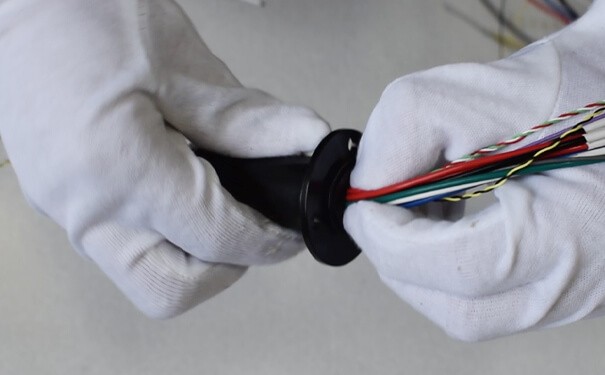
2. Environment and Working Conditions
The environmental conditions where the cable reel equipment will operate significantly affect the choice of slip ring. For environments with high dust levels or moisture, slip rings with higher IP ratings are necessary for added protection. In contrast, for hot or corrosive environments, slip rings designed with materials resistant to temperature changes or corrosion are a suitable choice.
3. Quality and Reliability
The quality and reliability of the slip ring directly impact the performance and lifecycle of cable reel equipment. Reliable slip rings minimize the possibility of system breakdowns and enhance operational efficiency. Consider manufacturer reputation and customer reviews when assessing quality and reliability.
4. Installation Convenience
Installation convenience influences the setup time and correct operation of the cable reel equipment. Slip rings with modularity, ease of use, and clear installation instructions simplify this process and reduce potential errors.
5. Wear Resistance
Slip rings endure considerable friction during rotation, which results in wear and tear over time. Slip rings with high wear resistance last longer, extending the service life of the cable reel and reducing downtime associated with maintenance and replacement.
6. Service Life
Service life refers to the estimated operational lifespan of the slip ring under normal working conditions. A longer service life often means less frequent maintenance or replacements. This factor can influence the total cost of ownership and should be considered from a long-term operational perspective.
7. Cost
Cost, while important, should not be considered in isolation but in conjunction with other factors such as quality, reliability, and service life. While less expensive slip rings may seem attractive, they may underperform or have shorter service lives, leading to higher maintenance or replacement costs in the long run.
Thoroughly consider all these factors to make an informed decision on the right slip ring for your cable reel equipment. Meeting the specific requirements of your application will ensure an optimal and cost-effective operation.
Benefits of Slip Rings in Cable Reel Equipment
Slip rings offer numerous advantages for cable reel equipment. Let’s discuss each of the eight key benefits in more detail:
1. Continuous Power and Signal Transmission
Slip rings enable a continuous and seamless transfer of power and electrical signals between stationary and rotating parts in cable reel equipment, ensuring uninterrupted operation and reliable performance.
2. Reduced Friction
Slip rings are designed to minimize friction between the rotating and stationary components in the system. This results in lower wear and tear on the parts, prolonging their service life and reducing the need for frequent maintenance or replacement.
3. Flexibility
Slip rings are available in a wide range of designs, sizes, and configurations, offering the flexibility to handle various cable types and applications. This versatility makes slip rings suitable for different cable reel equipment and operating conditions.
4. Improved System Performance
By enabling the continuous flow of power and signals without interruption, slip rings contribute to the overall system performance improvement by reducing electrical noise, resistance, and heat generation.
5. Enhanced System Reliability
Slip rings enhance system reliability by ensuring a seamless connection between the stationary and rotating components in cable reel equipment. This reduces the potential for operational disruptions, system shutdowns, and costly downtimes.
6. Easier Maintenance
Due to their design, slip rings reduce wear and tear on components within the cable reel system, thus simplifying maintenance tasks. Additionally, modular slip rings allow for easy replacement, further easing the maintenance process.
7. Compatibility with High-Speed Data Transmission
With advancements in slip ring technology, like fiber optic slip rings, high-speed data transmission is now possible, offering a perfect solution for applications that require high-bandwidth signal transmission and immunity to electromagnetic interference.
8. Cost-Effectiveness
By improving system reliability, simplifying maintenance, and contributing to overall system performance, slip rings offer long-term cost savings. They help in reducing the total cost of ownership for the cable reel equipment and maintaining a high level of operational efficiency.
In summary, slip rings play a crucial role in enhancing the performance, reliability, and efficiency of cable reel equipment. By considering all of the above benefits, operators can invest in suitable slip rings, tailored to fit their specific needs and requirements, ensuring optimal operation and long-lasting effectiveness.
Cable Reel Slip Rings Industry Applications
Cable reel slip rings are critical components in various industries where reliable transmission of power and data from a stationary to a rotating structure is required. Here are some key industry applications for cable reel slip rings:
Military and Defense
- Radar Systems: Slip rings enable the rotation of radar antennas while maintaining continuous power and signal transmission.
- Armored Vehicles: Used in turrets and other rotating weapon systems to transmit power and control signals.
- Surveillance Systems: Facilitates 360-degree rotation of surveillance cameras and communication systems.
Aerospace
- Ground Support Equipment: Slip rings are used in cable reels for ground power units and aircraft maintenance platforms.
- Satellite Communications: Ensure continuous communication with rotating satellite dishes and antennas.
Marine and Offshore
- Cranes and Winches: Used in deck cranes and winches for cable management and to provide power and signals to rotating structures.
- ROVs (Remotely Operated Vehicles): Facilitate data and power transmission between the surface and underwater vehicles.
- Oil and Gas Platforms: Enable the rotation of drilling equipment and transfer of power and data in harsh offshore environments.
Industrial Automation
- Robotic Arms: Slip rings allow for the transfer of signals and power to the end effectors of robotic arms.
- Material Handling Systems: Used in automated warehouses and distribution centers for rotating conveyor systems and storage/retrieval units.
- Packaging Machinery: Ensure continuous operation of rotating packaging equipment for efficiency and reliability.
Entertainment
- Amusement Rides: Essential for transmitting power and control signals to rotating rides and attractions.
- Stage Lighting and Effects: Enable 360-degree rotation of stage lighting and special effects equipment.
Renewable Energy
- Wind Turbines: Used in the nacelle to transfer power and signals between the rotating blades and the stationary control systems.
- Solar Trackers: Facilitate the rotation of solar panels to follow the sun, maximizing energy capture.
Construction
- Tower Cranes: Slip rings are used to provide power and control signals to the rotating cab and lifting equipment.
- Excavators and Drilling Rigs: Ensure reliable operation of rotating equipment in construction and drilling applications.
Medical Equipment
- CT Scanners: Slip rings enable the continuous rotation of the scanner’s gantry while maintaining power and data connections.
- Surgical Robots: Provide reliable power and signal transmission to rotating parts of advanced surgical equipment.
Agriculture
- Irrigation Systems: Used in rotating irrigation reels to supply power and control signals.
- Harvesting Equipment: Ensure efficient operation of rotating machinery in harvesting and processing crops.
Transportation
- Railway Systems: Used in rotating parts of railway maintenance equipment and signal systems.
- Automotive Testing: Facilitate the transmission of data and power in rotating test benches and dynamometers.
By understanding the diverse applications of cable reel slip rings across different industries, manufacturers and suppliers can tailor their products to meet the specific needs and demands of each sector, ensuring optimal performance and reliability.
Troubleshooting and Maintenance of Cable Reel Slip Rings
Proper troubleshooting and maintenance of cable reel slip rings are essential to ensure their longevity and reliable performance. Here are some key practices and steps for troubleshooting and maintaining cable reel slip rings:
Troubleshooting
Intermittent Connections
- Symptom: Signals or power transmission are inconsistent or cut out intermittently.
- Possible Causes: Worn-out brushes, dirty contact surfaces, or loose connections.
- Solution: Inspect and clean the contact surfaces and brushes. Tighten any loose connections.
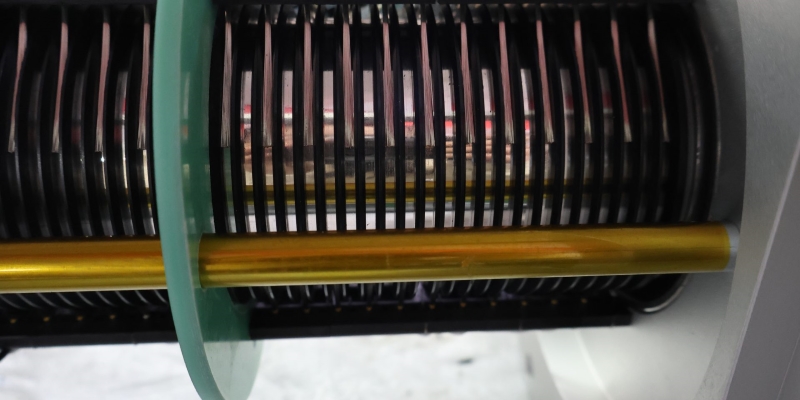
Excessive Electrical Noise
- Symptom: Unusual electrical noise or interference during operation.
- Possible Causes: Poor contact quality, worn-out brushes, or contamination.
- Solution: Clean the slip ring and brushes. Replace worn-out brushes and check for proper contact pressure.
Overheating
- Symptom: The slip ring assembly becomes excessively hot during operation.
- Possible Causes: High current load, poor ventilation, or inadequate contact.
- Solution: Ensure proper ventilation around the slip ring. Verify that the current load is within the slip ring’s rated capacity. Inspect and clean contacts for better conductivity.
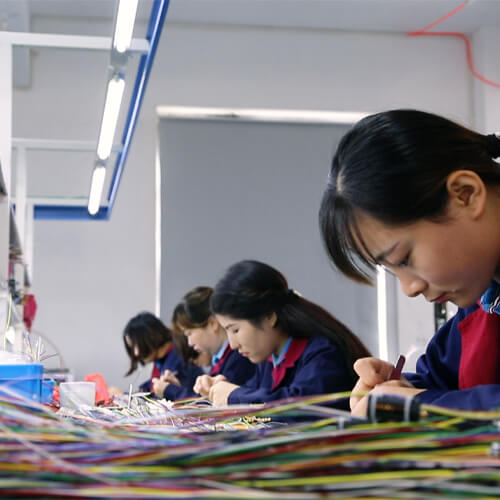
Physical Damage
- Symptom: Visible damage to the slip ring, such as cracks, breaks, or worn parts.
- Possible Causes: Mechanical stress, improper installation, or environmental factors.
- Solution: Inspect for mechanical damage and replace any damaged components. Ensure the slip ring is installed correctly and protected from harsh environmental conditions.
Loss of Signal Integrity
- Symptom: Degraded signal quality or data transmission errors.
- Possible Causes: Contaminated contact surfaces, worn brushes, or incorrect slip ring specifications.
- Solution: Clean the contact surfaces and replace worn brushes. Verify that the slip ring meets the application’s specifications for signal transmission.
Maintenance
Regular Cleaning
- Frequency: Every 3-6 months, depending on the operating environment.
- Steps:
- Disconnect power before performing maintenance.
- Use a clean, dry cloth to wipe off dust and debris from the slip ring assembly.
- Use a non-abrasive cleaner for more thorough cleaning if necessary.
Inspecting Brushes and Contacts
- Frequency: Every 6 months or as recommended by the manufacturer.
- Steps:
- Inspect brushes for wear and replace if necessary.
- Check contact surfaces for signs of wear, corrosion, or pitting.
- Ensure proper brush pressure and alignment.
Lubrication
- Frequency: As recommended by the manufacturer.
- Steps:
- Apply a small amount of appropriate lubricant to the contact surfaces, if specified by the manufacturer.
- Avoid over-lubrication as it can attract dust and debris.
Tightening Connections
- Frequency: Every 6 months.
- Steps:
- Inspect all electrical connections for tightness.
- Tighten any loose connections to ensure reliable power and signal transmission.
Checking for Environmental Protection
- Frequency: Annually or as needed based on the operating environment.
- Steps:
- Ensure that the slip ring is adequately protected from dust, moisture, and other environmental factors.
- Verify that any seals or enclosures are intact and functioning properly.
Recording Maintenance Activities
- Frequency: Ongoing.
- Steps:
- Keep a detailed log of all maintenance activities, including inspections, cleanings, replacements, and any issues encountered.
- Record the date, findings, and actions taken for future reference.
Best Practices
- Follow Manufacturer’s Guidelines: Always adhere to the maintenance and troubleshooting guidelines provided by the slip ring manufacturer.
- Train Personnel: Ensure that maintenance personnel are properly trained in handling and maintaining slip rings.
- Use Quality Parts: Use genuine replacement parts and high-quality lubricants to maintain the performance and longevity of the slip ring.
- Monitor Performance: Regularly monitor the performance of the slip ring and address any issues promptly to prevent further damage.
By implementing these troubleshooting and maintenance practices, you can ensure the reliable and efficient operation of cable reel slip rings, reducing downtime and extending the lifespan of your equipment.
Frequently Asked Questions
Q: What is a slip ring in a cable reel?
A: A slip ring is a device used in cable reel equipment that allows the transmission of power and electrical signals from a stationary to a rotating structure.
Q: Why is the size and type of cable important when selecting a slip ring?
A: The size and type of the cable are crucial as they determine the slip ring’s specifications, such as the current-carrying capacity, design, and speed.
Q: How do environmental conditions affect slip ring selection?
A: Environmental conditions like temperature, humidity, and the presence of dust can affect the performance of a slip ring. Different slip ring types are designed to withstand different environmental conditions.
Q: Why is installation convenience important?
A: Installation convenience reduces the time spent on set up and aids in efficient operation. Therefore, choosing a slip ring with easy installation procedures is recommended.
Q: What is the importance of wear resistance in slip rings?
A: A slip ring with high wear resistance is less likely to wear out with continued use, thus extending the service life of the cable reel equipment.
Q: Does the cost of a slip ring affect its quality?
A: While cost can be an indicator of quality, it is not always the case. It is essential to consider other factors such as efficiency, durability, and adaptability to specific working conditions when choosing a slip ring.
Q: Does the service life of a slip-ring affect the overall lifespan of cable reel equipment?
A: Yes, a slip ring with a short service life might require frequent replacements, causing downtime which can affect the overall lifespan of the cable reel equipment.
Q: How does a slip ring enhance system reliability?
A: By enabling the seamless transmission of power and signals in a rotating system, slip rings increase system reliability.
Q: Are there slip rings that are suitable for all cable reel applications?
A: No, different applications require different types of slip rings. Factors such as cable type and size, working conditions, and system requirements will influence the choice of slip ring.
Q: How does a slip ring simplify system maintenance?
A: Slip rings reduce the friction and electrical noise in the system, thus reducing wear and tear. This simplifies maintenance processes.
In conclusion, understanding the importance of slip ring selection in any cable reel application is crucial. This guide illustrated an array of factors that should be taken into account when making your selection, benefits accrued from careful choice, and provided answers to frequently asked questions. An informed decision can directly influence your equipment’s performance, longevity, and maintenance needs, making it a strategic consideration for all involved in the utilization of cable reel equipment.
See What We Can Do

